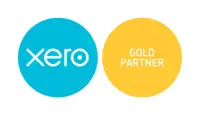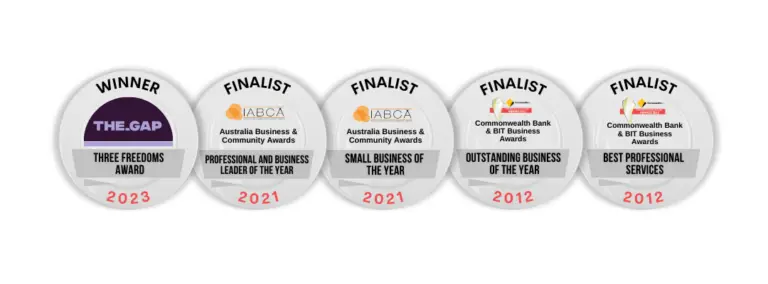A little while back, I wrote about the share market and how it had received a hammering. A few weeks later, it happened again, but it was a lot worse.
If you read the news or listened to it, it sounded like an absolute bloodbath. And maybe to some, it was, but you would have thought the market had reached the lowest ebb possible. It seemed the market had regained its swagger. And then, BAM! We got hammered again.
But all that had happened was that any gains since January were wiped out. It does not seem so bad when I look at it that way. It effectively meant that, in most cases, anything I held on 31 December 2023 was still positive. Anything after December was negative, but I can live with that.
And as I said in that article, low prices are an advantage too. It means you can buy cheap. And we all love a bargain.
The stock market is risky. But it’s not as dangerous as everyone makes it sound.
Buying when the market is poor is good if you have a Superfund that regularly invests in the share market (most do). But most people get scared and pull out, so you should never pay too much attention to what the market does in a short time.
I have an SMSF, which means that, unlike retail funds, my investment purchases are not automatically set up. I can do that because it is easy, but I think I need to be more active. After all, I am human, and there are sometimes better things to do in life.
That means every so often, I notice that the SMSF bank balance has a bit too much in it, and then I have what my wife calls financial diarrhoea. It’s as if I become a 5-year-old given $30 bucks in a candy store. Oh, so many choices…..
At the end of the tax year, it drives Mia, one of the team at WOW! Advisors nuts because she is the one who must try to work out what I have done and reconcile dividends and purchases. I stay away from her when she does my accounts and tax returns. I fear for my safety.
That’s why I should put my investing plan on autopilot. I should automatically buy the same index funds each month and then forget about them. But I can’t. I need the thrill of buying shares and seeing what happens to them. On the other hand, I rarely sell unless I have information to suggest that what I have purchased in the past is a dog.
But buying in lump sums and buying different (often random) things does not work for me. That is why I tell my team that if they are going to invest, they should do it regularly and consistently in a few things.
This is where I categorically do not practice what I preach.
But I am not alone. I follow Morgans regularly, and every quarter, they tweak their portfolios, which means they sell some (which may mean taking losses or creating a capital gain tax bill) and buy others in the hope that going forward, more money will be made. In fact, that is what all investment funds and brokers do. It is what your retail Superfund does, too.
But I am still determining if it always works in the long run. In the short run, yes. But in the long run? I don’t think so.
Here’s why. We are often shown tables of the best fund managers. If a fund manager makes it to the top, there are many celebration lunches, fat bonuses, and back-slapping. But what happens within two years? According to Standard and Poor, only 2% of those funds remain at the top, which means 98% drop down the table.
There’s more grim news.
That is because, after fees, only 5% of Aussie share fund managers have performed equivalently or higher than an index fund ETF over the past five years.
In other words, 95% do worse after their fees than the market. And I believe that is because:
- They are trying to beat the market by buying and selling different shares within the portfolio and
- They are charging too much in fees.
Now I know what you are going to say. You will tell me that such an investment fund has performed exceptionally well in the market. They may have over a year or two, but you must carefully check the returns after fees.
A typical index fund will charge about 0.5% in fees. If you have a portfolio of $500,000, the cost is $2,500. Now take a fund manager that charges 2%. That is a $10,000 fee.
If the index produces a return of 10%, the net gain is $47,500 or 9.5% ($50,000 this year less the fund fee of $2,500). On the other hand, the fund manager must get you a gross gain of 11.5% ($57,500) so that after charges of $10,000, you still have the same net return. It needs to generate a return higher than 11.5% to beat the market.
That means the investment fund must take higher risks to achieve that goal. That may work for a while, but over time, statistics tell us that the risk does not pay, and you make losses. This explains why it is harder for fund managers always to beat the market.
That is why when Ros and I talk about our strategic investments and their performance, she smiles more than I do because she does it the proper way: invest regularly in a small portfolio of index and ETF funds without a fund manager in sight.
You still need to use Fund managers or invest in the portfolio a financial planner recommends. Often, they work primarily if you want to invest in emerging markets or emerging sectors, and for large sums of investments, they can be diversified better, too. But keep one eye on charges and the other eye on returns and then hammer them if they are unable to beat the market after charges. That’s because what is the point of employing them if all they can get you is what you could get if you invested in the market yourself?
But you ask why this blog’s title is about dying or being disengaged.
Well, Fidelity (one of the biggest asset managers in the world) undertook a study, and what they found was astonishing.
This is stumping crazy stuff.
Because (in Fidelity’s own words) over 10 years, their top-performing client accounts were either clients who had either forgotten about their investments(!) or they were dead(!) In other words, they were inactive, did not look at their portfolio, and let the market do its magic.
We should invest wisely and then forget.
Which means I am doomed. And you might be, too.
Or are we?
Because yes, you want to beat the market, but we don’t always know what to do. Often, we don’t know what we want. We don’t know what to invest in, and we often don’t know what the future holds. We don’t know how much we need in retirement, and we don’t know how long we are going to live. We do not know if our portfolio is diversified for risk. And not everyone is confident enough to make decisions.
It would be best if you were Gold Almighty to know these thongs, and because we are not feeble humans, don’t cut it.
And that is when financial planners and fund managers come into play. Sometimes, it is better to get a lower rate of return knowing that at least you will get something, whereas if you did nothing or made investments in the market that do not pay, you could inevitably end up with nothing.
Investing in the stock market is step 7 of our nine steps to working less, earning more and creating wealth. If you would like to know more, contact Hitesh@wowadvisors.com.au or Ros at ros@wowadvisors.com.au or call us on 07 3161 9548.




